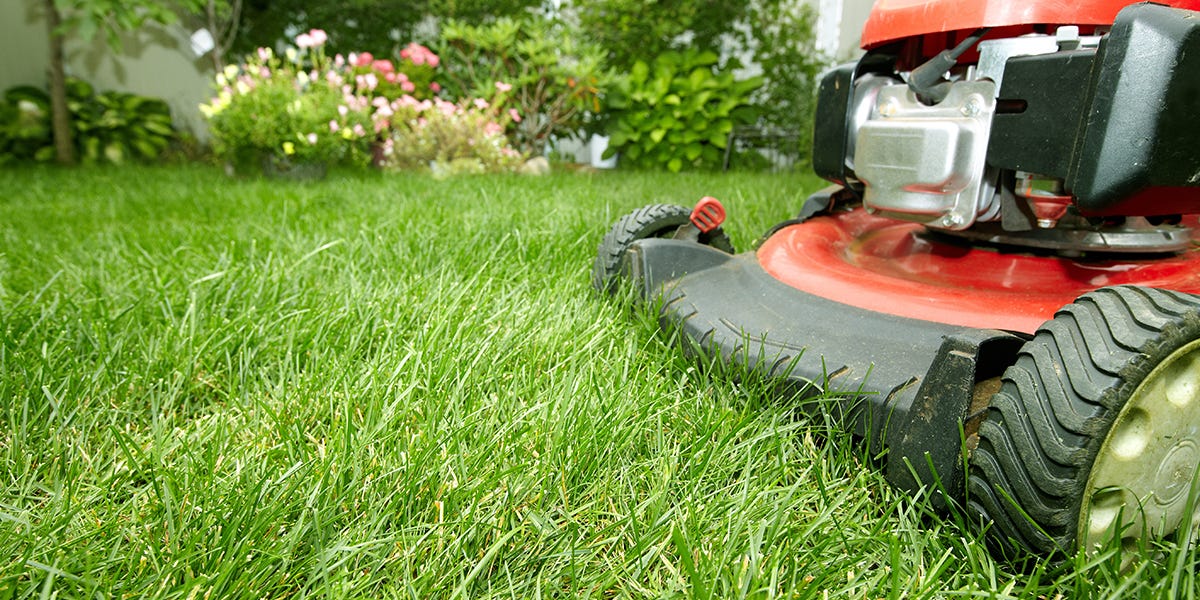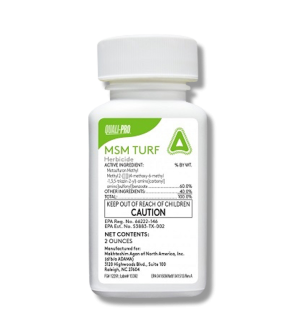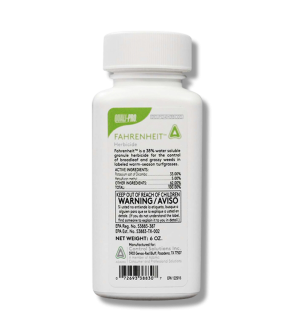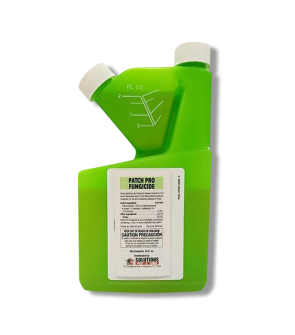Mowing Tips For A Thicker Lawn
Most Effective Products
Mowing Tips For A Thicker Lawn
This page is a general mowing guide. Here you can find beneficial information for weed, insect, and pest control and mowing tips to increase your residential lawn. This guide will go over general mowing techniques that help to promote a thicker, and greener lawn.
Mowing your lawn is an important task for any homeowner to take on for the health of their lawn. While it may sound like a straightforward task there is a right and wrong way to cut grass. When done right, mowing promotes strong turf root development, plant vigor, and weed and disease control.
Mow incorrectly, and your lawn will struggle to survive due to the thinning of turf, inability to grow properly, and the possible spread of diseases or pest activity. As the season changes, so will the rate and growing conditions of your turf, therefore its necessary to properly arm yourself with essential mowing information.
Keeping your lawn in the best shape can easily be done by following the tips and products suggested throughout this DIY guide.
Control Weeds, Insects, and Disease

Before you get behind your lawn mower, eliminate any weeds, insects, and diseases present in your turf. Regular mowing helps to control weeds, but it can also help them spread if they have already begun to produce seeds.
Depending on the pest or disease, mowing can also spread the infestation further into your lawn. If you were to mow over an ant hill then it would cause the worker ants to relocate the queen to another part of your lawn.
When it comes to weeds, we recommend using MSM Turf for weeds on cool-seasoned turf and Fahrenheit Herbicide for weeds on warm-seasoned turf. Both of these products are selective water dispensable granules that treat various emerged weeds in turf.
To treat weeds with Fahrenheit Herbicide, apply 0.09 to 0.28 oz. of product per gallon of water per 1,000 sq. ft. To get rid of weeds with MSM Turf, use 0.0057 to 0.023 oz. of product per gallon of water per 1,000 sq. ft.
To treat or prevent insects on your lawn, it may be best to use a residual insecticide like Supreme IT. Supreme IT is a suspended insecticide concentrate made with the active ingredient bifenthrin 7.9% to control over 70 types of pests. When applied, this product will continue to repel labeled pests for up to 90 days after application.
Depending on your pest, you will mix between 0.25 to 0.5 fl. oz. of Supreme IT per gallon of water per 1,000 sq. ft. of turfgrass. Apply your mixed solution to the top and bottom of turfgrass leaves until wet, but not to the point of runoff. Do not allow children or pets to enter treated areas until it has dried completely.
When your lawn is showing signs of disease or fungal development, try a systemic fungicide like Patch Pro. Patch Pro is an emulsifiable fungicide concentrate that can control and prevent a broad-spectrum of diseases on lawns and plants. Depending on the disease in your lawn, you will use between 0.5 to 4.0 fl. oz. of Patch Pro per gallon of water per 1,000 sq. ft.
Determine how much product to use by measuring the square footage of the treatment area. To do this, measure the length and width of the treatment area then multiply them together (length X width = square footage).
Each of these products mentioned will need to be mixed with water so we recommend using a handheld pump sprayer for uniform application. Fill your sprayer with half the amount of water, add measured amount of water, then pour remaining half of water into the spray tank. Close the spray tank lid and shake until the solution is evenly mixed.
Don't Cut Turf Too Short

Once the infestations have been controlled, proceed with mowing your turf. One of the most common turf injuries is mowing it too low. When a lawn is consistently mowed short the lawn will develop a shorter root system.
A shorter root system will cause turf stress, which may lead to frequent watering and fertilization due to the lawns inability to properly absorb water and store nutrients. The proper height to mow your lawn depends on the grass species you have and the season.
As a good rule of thumb, remove no more than 1/3 of the grass blades when mowing.
Change Mowing Pattern

Mowing patterns are often neglected, but they can have a significant impact on your turfs health. Lawns that are cut in the same pattern each time may cause your grass to grow in one direction leading to ruts, permanent tracks from mower wheels, stress, compacted soil, and slower growth rate.
By changing the mowing pattern each time the lawn is mowed, the grass will grow upright and encourage a thicker, green growth. The most common lawn patterns you can mow your lawn with are left to right, front to back, diagonal front right to back left, and diagonal front left to back right.
Mow When Grass is Dry

Frequent spring or summer rain showers often sidetrack mowing schedules for homeowners. Mowing when the turf is wet can cause several problems from wet grass clippings sticking together resulting in possible chute clogging, uneven mowing, compaction in soil and turf, disease and weed spread, and risks to the user due to the possibly of slipping or flipping over of machinery.
Wait until mid-day when the turf has had enough time to dry from mowing dew and previous rainfall. This will not only avoid wet periods, but reduce heat stress on turf.
Check Your Mowing Equipment

When a mower blade is dull it will tear the grass instead of giving it an even cut. The ripped grass blades then become discolored, which can weaken the grass and make it more vulnerable to diseases.
Prior to using your lawn mower, ensure that the mower parts are operational and sharpen the blades. Have the mower blades sharpened and balanced at least twice per season. Take the time to clean the underside of the mower from grass clippings as they can block bagging clippings. Additionally, this wet foliage can corrode the mower resulting in premature rust and wear.
Ensure the mower is fully turned off before removing the blades and other part of the machinery.
Key Takeaways
What Height Should I Mow First
- Typically, for most turf grass species its recommended to wait until it reaches at least 3 inches in hieght before mowing.
How Often is Too Often To Mow Your Lawn
- Mowing once a week during the growing season should suffice for most turf species.
Does Frequent Mowing Thicken Grass
- Frequent mowing of your lawn does help to thicken turfgrass as long as no more than 1/3 is removed.














































































































































































































































































































































































































































































































































